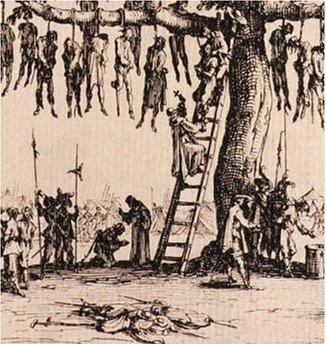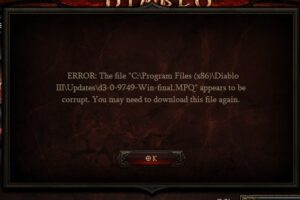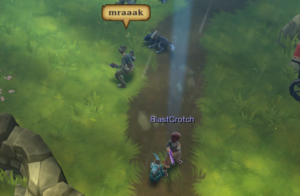This is important. Link
Windows Live on PC: what an awesome idea!

Thence, I got Bulletstorm off steam the other day for 19.99 and thought: alright, People can Fly is a pretty good shop based on Painkiller, and even though the main voice actor is the same guy from URBAN REIGN and a thousand other games, it couldn’t be that bad– and it’s not. Though it follows the whole “you are playing a movie” style, it’s fun and despite the whole redneck’s in space vibe (yet again), the dialog is snappy and filthy and far better than the embarrassingly strained Redneck’s in space babble of Starcraft 2.
However, like Dawn of War 2 and lots of other games I try to avoid for this reason alone, if you buy it from Steam you then have to sign in to play it on windows live. Like the true measure of gaming ennui, Diablo 3, Bulletstorm, a primarily single player game has an online all the time requirement? And WHY did this get pirated? Simply put, without Windows live the pirated version is a better experience than if you, like me, did the right thing and purchased the game legally for the PC. Now call me an idiot because I forgot my Windows live login first off, then apparently if someone else is logged in as you (like some childe watching my little ponies) you cannot validate your game or even play it. All of these things make sense, but of course, I just wanted to play the SINGLE PLAYER game and not be connected to the internet in any way. I don’t want achievements, I don’t give a goatsee about anyone seeing on my gamer tag that I have been playing Bulletstorm and finally it seems like it would be a crap multiplayer game, so I have no interest in that (which is sad because Painkiller’s DM was great!).
So to end this rant, I want to say that I do like Origin and Steam (of course) because they offer VALUE to me. Windows Live for PC offers absolutely nothing but total annoyance for all users.
Paint assholes
Along with their recent price increase overall, Games Workshop changed their paint line again. This time it wasn’t a few colors here and there that were ‘retired,’ the entire LINE has been changed. Now I’m not a big fan of GW’s paints overall: they are water based so dry out way faster than other manufacturers– but they have been the foundation of my paint palette for decades now– so much so that I am now driving around to non-GW stockists who carry GW paint to try to find key colors that DO NOT HAVE AN EQUIVALENT PAINT COLOR in the new set (like bestial brown). You see, most GW stockists sent back their paints for free replacements, leaving the only place you can get the old paints to be stockists that are on the ‘outs’ (i.e. they carried GW stuff but are just trying to sell off what they have an not buying new stuff– or ebay/craigslist, whatever. Of course the prices will rise and rise.
This is not to say the new paint line is altogether bad, some of GW’s colors (especially their inks and metallics) are great stuff but to have no equivalents? That’s the DRIZZLIN SHITS I tell you what.
Dark Souls on Steam… August
It’s sad when you go out and buy a game the first day it’s out, then just run out of time on the Xbox to get anywhere at all on it before it’s My Little Pony and fucking Calliou all over the place. Owning a M-17 game with kids around is the drizzlin’ shits, and Dark Souls has been added to the list of games like Crackdown 2 and Red Dead Redemption that I haven’t finished SPECIFICALLY because I cannot play with the kids even conscious in the house (they can hear the big death and cursing and I’ll turn around and both of them will be standing there while I’m shooting up a saloon or slapping some zombies around).
So the fact that this is coming out on Steam means I will actually get a chance to get my ass kicked by it over and over… and that’s a good thing. Now if I could only think of an excuse to why I haven’t finished GODHAND…
Diablo 3 is lag incarnate and altogether pretty boring
I’ve had some fun with D3 with two characters just over level 10, but it has problems, problems that might be OK if it were an MMO and I liked MMO’s. It’s not an MMO and the problems with latency, the rubberbanding and error 33, patching errors are just ridiculous, especially in (drum roll) single player. Your mileage varies I’m sure but to put it bluntly, D3 is not a very good single player game. It’s linear, it’s pretty boring so far except for the boss fights and seeing all the stuff in the environment you can blow up. This is par for the course with the Diablo series: they are not that great single player games– the Zyel mod was created specifically to give players that wanted a good single player experience a better one than could be gotten off vanilla Diablo 2. And, please, go back and try to play Diablo 1 without falling asleep in your chair.
Multiplayer– that’s where the game shines and while it’s been fun it’s been marred, of course, by lag– maybe acceptable in this early stage if the two core things people want out of the game are fulfilled: fun combat and fun item management. The former is OK. I’m still on the fence about it. The concept I want to talk around with D3 is the idea of RELATIVE fun. On it’s own, D3 is good, it’s not great, but when you put it up against Torchlight 2 it falls completely flat.
I reiterate some of my earlier posts– once you play Torchlight 2, it’s really tough to go back to Diablo 3’s slow, ponderous gameplay. It feels like going from fast paced hyper Gauntlet madness with craziness at every turn in Torchlight 2 to slow, static and, while visually appealing, fairly stagnant fighting in Diablo 3. The second point of fun, item management, is a fucking chore in D3. While I’m still low level, drops are shit and from what I’ve read and heard– it doesn’t get much better. The items so far are bland and overall the crafting really feels like a combination of Hellgate London and Titan Quest with all the breaking apart of items into more crap and crafting into….yay more of the same crap you picked up! Basically you take all your blue items and yellows you do not want, throw away the white items (they are totally useless in the game–and the grey items? what in the flying fuck are they doing in the game?), break the rest of them apart because they don’t fit your character and then take the sub items ( like subtle essence) to create some type of item with a reroll on the effects— in turn this item may not work out for your character so you break the produced item apart and when you have enough sub items again, you get another reroll which may or may not work out for you. There’s no way to influence the reroll (like a cube lock for example) There’s no path of crafting other than this that I’ve seen (sockets and jewels– though no runes or rune words). From what I’ve seen so far, it’s quite tedious. I made 11 or so belts and they all had almost exactly the same powers– nothing special, nothing that gives your character access to anything outside of his set of attacks (like a summon power for a barbarian).
Act 1? Nothing compared to D2’s act 1. It’s very short– it’s got one big boss at the end and that’s it (the Butcher). The fight is boring.
So now I sit waiting for a patch that looks like it’s going to take an hour to download and I’m thinking:

an intro to space piss!
1979. I’d already been exposed to the cultural virus that is Star Wars and had seen Battle of the Planets and Starship Yamato and Far Out Space Nuts– but nothing could prepare a young person of the 70’s for the dribble if urine from the void that is JASON OF STAR COMMAND. Part of the financial drive to make kids shows with real people rather than the far to expensive cartoons of earlier decades (ala Kroft Supershow and it’s ilk), JASON OF STAR COMMAND starts with the worst robot you’ve ever seen before and then digresses into a rather complex plot about body doubles and for an 8 year old, abject confusion. Since this was a plotline that should have NOT been attempted before any character development had taken place so we (the 8 year old audience) could actually tell the evil doubles before the characters in the show could rather than just wondering what the heck is going on and hoping some stuff blows up (like the Wiki robot or, best yet, the clothes off Susan O’Hanlon).
Well, this fucking show is on Netflix now and if I could I would force you to watch it to share that little piece of my childhood that died drowning in astral urine and to know for certain when I talk about failed MOO clones or the people complaining about the Mass Effect ending and deem them all sorts of sprays of SPACE PISS, I’m channeling JASON OF STAR COMMAND into your open mouth.
And speaking of the 70’s, look at this holy shit piece of plastic for the rich kids:

Torchlight 2 beta video action mraak
Watch me die THRICE, see the explosions, see the no lag, see the ability to add skill points, see the ability to dodge enemy attacks!
Dare I say it: Torchlight 2 beta > Diablo 3 beta. This is not to say that these are not great games– they are both amazing, but judging from the beta, TL2 was just a better experience. Here’s why:
1) It’s a better game. It’s more fun to play, especially if you’ve played a lot of Diablo 2.
2) It’s more respectful of your time. There’s very little B.S. story stuff. It gets right to the kill, loot, item manage, kill cycle that is the core of the game.
3) No lag for no good reason -sure other players will lag but that’s a normal reason for lag. If you’re playing against someone in the BFE of the internet, BFE lag is what you’re going to get. What you won’t get is client side prediction coupled with an overburdened server.
4) Hit lag – when a monster attacks and you are nowhere near that monster you do not get hit. In Diablo, the client side prediction means you will get hit anyway. This takes a huge amount of the tactical play from the game.
5) You can play at the highest difficulty right out of the gate without slogging through the game. This is the main reason why the TL2 beta is better.
This isn’t to compare the final versions of each game–I haven’t played either. Diablo 3 was a beta I felt I +had+ to play, but TL2 I cannot WAIT to play every time I get the chance to.
As I’ve said before, Diablo 3 will be great to run through once on normal and dabble in Nightmare a bit, probably a full month of play and you will get your money out of it. For the long haul, the game you will be playing in a year is going to be Torchlight 2.
And the Torchlight 2 hardcore dead mound rises high!
Torchlight 2 beta
YEAAAAHHHHHHHH. Got in an hour or so on Elite Hardcore as the Engineer with a couple random guys and died at level 7 in a huge mosh of undead. Great stuff– and I am pleased to report that even in multiplayer games YOU CAN DODGE ENEMY ATTACKS. For gaming value, even from what little I’ve seen so far, TL2 is pure gold 20$ for this? It’s crazy.
Well it’s about goddamn time!
Endless Space. Community Driven 4x space game by some French peoples. When you play, in the distance you can hear the cowes lowing out MOO. Shot out onto the internets via Steam in alpha format if you pre-order the game, and while it is definitely an ALPHA, the game and interface shows a great deal of promise for those of use that feel we have been urinated upon from a great height by games like Sword of the Stars and Galactic Civ.
High points:
Combat is tight as Seven of Nine’s uniform and will work for both single player AND multiplayer
The interface is Jeisa Chiminazzo. Extremely impressive both functionally and visually.
Ship design is easy.
BauriceMastard did a video of some play where he and I were babbling about it and of course it’s worth a listen– all fourty three minutes and twenty six seconds of it.
